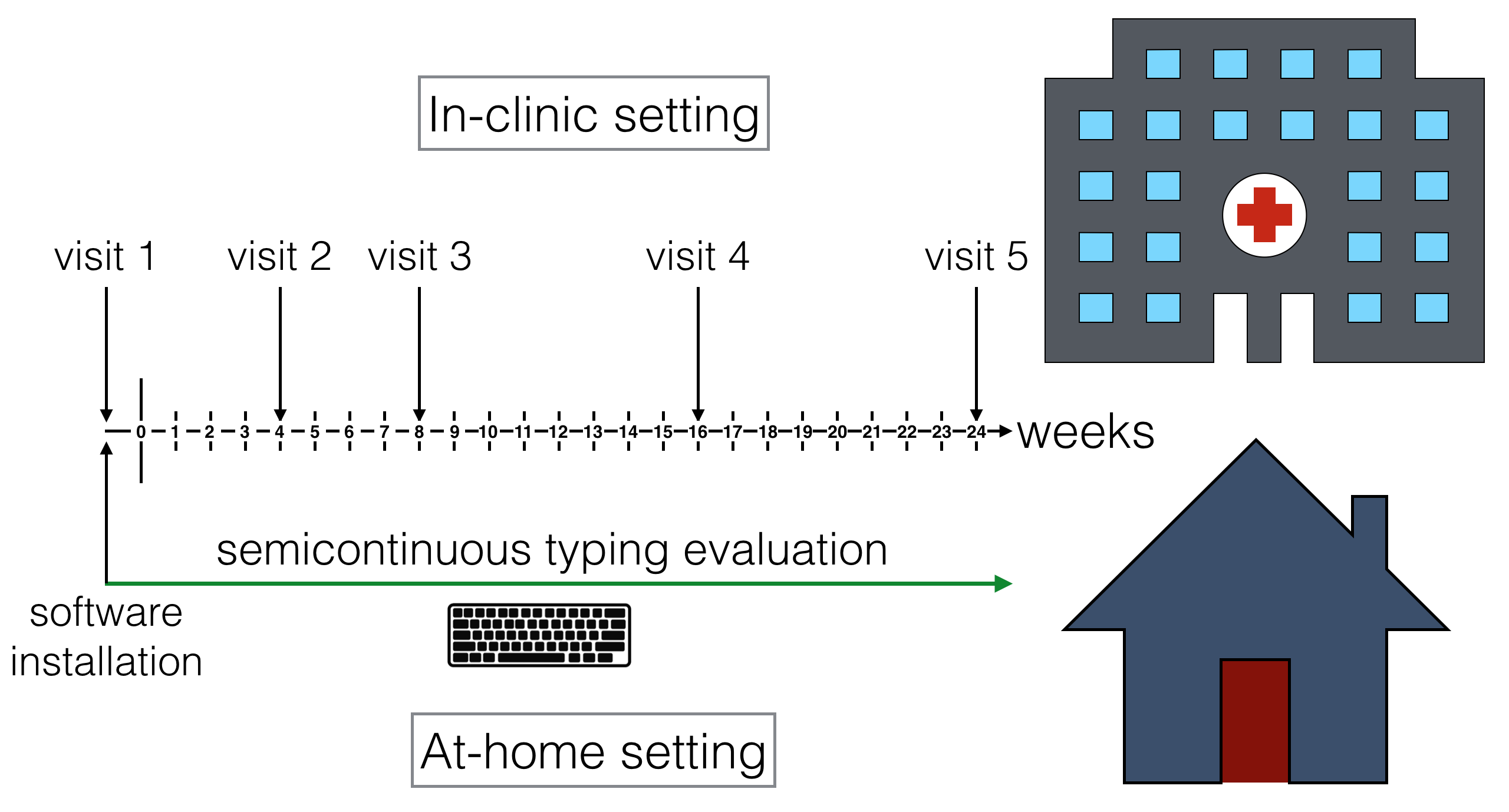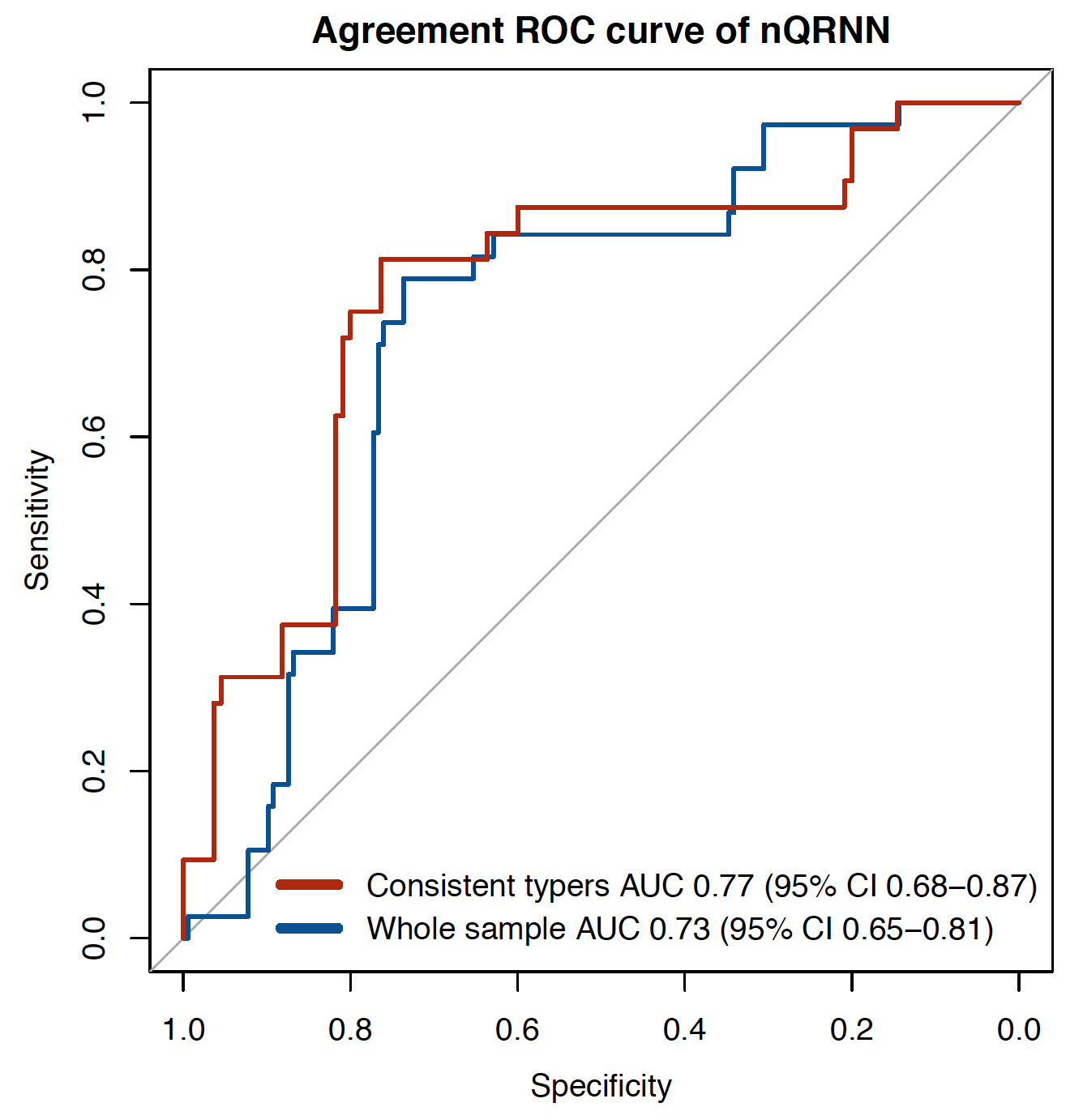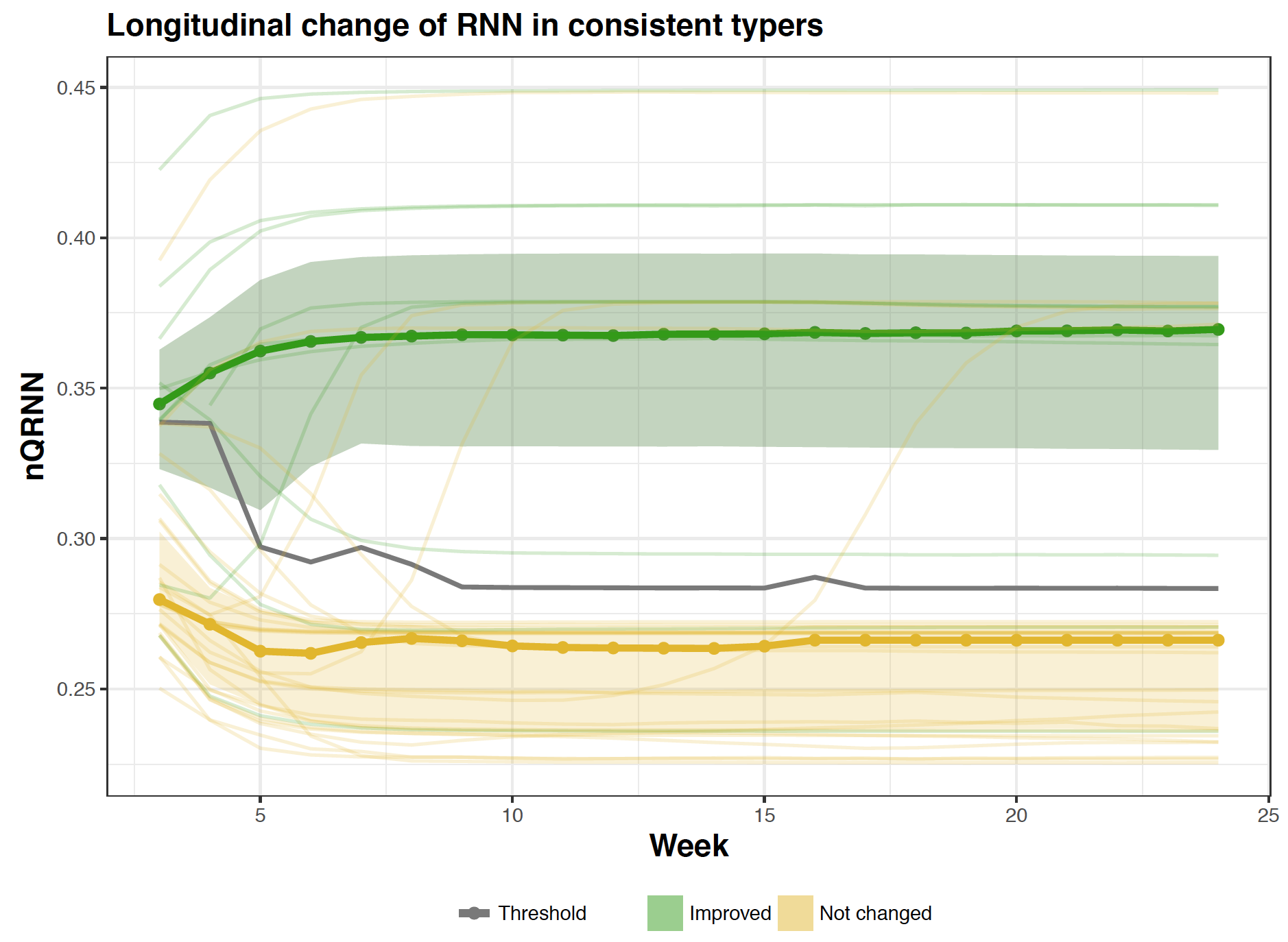Session Information
Date: Sunday, October 7, 2018
Session Title: Technology
Session Time: 1:45pm-3:15pm
Location: Hall 3FG
Objective: We designed an algorithm to detect response to medication in an early PD population using at-home, unsupervised, unobtrusive typing data.
Background: Advances in technology are opening a new era to remotely evaluate people with PD. In previous studies we have shown that features of inlab keyboard typing can be used to evaluate motor skills and to classify subjects as having PD or not [1]. More recently we have shown the same capability from typing on a touchscreen based information and from keyboard data at-home [2]. We now hypothesized that typing on an electronic device, a habitual behavior, likely controlled by the nigrostriatal dopaminergic pathway, could allow for objectively and non-obtrusively monitoring parkinsonian features and response to medication in an at-home setting.
Methods: We designed a naturalistic prospective validation study to evaluate whether typing patterns changed in accordance with responsiveness to medication. 31 early PD subjects, who were going to start a dopaminergic drug, and 30 matched controls were enrolled. We remotely monitored their typing pattern over a 6-month follow-up period while antiparkinsonian medications were being titrated (fig.1). A novel deep learning algorithm (nQRNN) was developed to detect participants’ outcome defined as the response to medication assessed by the UPDRS-III minimal clinically important difference (MCID) at the final visit (6 months). Further, we tested if this model could predict that outcome earlier than 6 months.
Results: The nQRNN had an overall moderate kappa agreement (k=0.50) and fair 0.73 area under the ROC curve with the time-coincident UPDRS-III MCID-based classification of response (fig.2). Furthermore, the nQRNN at week 3 (and beyond) could reliably predict which subjects would respond and which wouldn’t. (fig.3)
Conclusions: This preliminary study suggests that a habitual task based on remotely-gathered unsupervised typing data at home allows for an accurate and predictive classification of drug response in PD. If confirmed by a larger prospective study, this approach could provide supplementary information to clinicians for a more continuous monitoring of motor symptoms of PD, thus helping to take informed decision on therapeutic strategies and disease management. Also, this tool could be useful as a cost effective and reliable outcome measure for clinical trials to test response to medication.
References: 1. Giancardo L, Sánchez-Ferro Á, Arroyo-Gallego T, et al. Computer keyboard interaction as an indicator of early Parkinson’s disease. Sci Rep 2016;6:34468. doi:10.1038/srep34468. 2. Arroyo-Gallego, T, Ledesma-Carbayo, M, Butterworth, I, et al. Detecting Motor Impairment in Early Parkinson’s Disease via Natural Typing Interaction with Keyboards: Validation of the neuroQWERTY Approach in an Uncontrolled At-Home Setting. JMIR 2018 in press. doi: 10.2196/jmir.9462.
To cite this abstract in AMA style:
M. Matarazzo, T. Arroyo-Gallego, P. Montero Escribano, V. Puertas-Martín, I. Butterworth, C. S. Mendoza, MJ. Ledesma-Carbayo, MJ. Catalán, JA. Molina-Arjona, F. Bermejo-Pareja, JC. Martínez Castrillo, L. López-Manzanares, A. Alonso-Cánovas, J. Herreros-Rodríguez, I. Obeso, P. Martínez Martín, JC. Martínez-Ávila, A. Gómez de-la-Cámara, M. Gray, JA. Obeso, L. Giancardo, Á. Sánchez-Ferro. Objective monitoring of drug response in early PD patients using remote, at-home typing data through machine learning analysis [abstract]. Mov Disord. 2018; 33 (suppl 2). https://www.mdsabstracts.org/abstract/objective-monitoring-of-drug-response-in-early-pd-patients-using-remote-at-home-typing-data-through-machine-learning-analysis/. Accessed November 19, 2025.« Back to 2018 International Congress
MDS Abstracts - https://www.mdsabstracts.org/abstract/objective-monitoring-of-drug-response-in-early-pd-patients-using-remote-at-home-typing-data-through-machine-learning-analysis/



